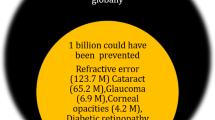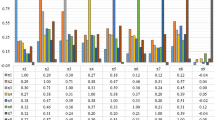Abstract
Human eyes are most sophisticated organ, with perfect and interrelated subsystems such as retina, pupil, iris, cornea, lens and optic nerve. The eye disorder such as cataract is a major health problem in the old age. Cataract is formed by clouding of lens, which is painless and developed slowly over a long period. Cataract will slowly diminish the vision leading to the blindness. At an average age of 65, it is most common and one third of the people of this age in world have cataract in one or both the eyes. A system for detection of the cataract and to test for the efficacy of the post-cataract surgery using optical images is proposed using artificial intelligence techniques. Images processing and Fuzzy K-means clustering algorithm is applied on the raw optical images to detect the features specific to three classes to be classified. Then the backpropagation algorithm (BPA) was used for the classification. In this work, we have used 140 optical image belonging to the three classes. The ANN classifier showed an average rate of 93.3% in detecting normal, cataract and post cataract optical images. The system proposed exhibited 98% sensitivity and 100% specificity, which indicates that the results are clinically significant. This system can also be used to test the efficacy of the cataract operation by testing the post-cataract surgery optical images.







Similar content being viewed by others
References
Acharya, U. R., Wong, L. Y., Ng, E. Y. K., and Suri, J. S., Automatic identification of anterior segment eye abnormality. ITBM-RBM. 28 (1)35–41, 2007. France.
Acharya, U. R., Ng, E. Y. K., and Suri, J. S., Image Modelling of Human Eye. Artech House, Norwood, 2008.
Ahn, C. B., Lee, S. Y., Nalcioglu, O., and Cho, Z. H., An improved nuclear magnetic resonance diffusion coefficient imaging method using an optimized pulse sequence. Med. Phys. 13:789, 1986. doi:10.1118/1.595850.
Ahn, C. B., Lee, S. Y., Nalcioglu, O., and Cho, Z. H., The effects of random directional distributed flow in nuclear magnetic resonance imaging. Med. Phys. 14:43, 1987. doi:10.1118/1.596093.
Atlas, S. W., Bilaniuk, L. T., Zimmerman, R. A., Hackney, D. B., Goldberg, H. I., and Grossman, R. I., Orbit: Initial experience with surface coil spin-echo MR imaging at 1.5 T. Radiology. 164:501, 1987.
Chang, B. A., Janet, A. A., Sung, C. J., Inja, K., William, H. G., and Zang-Hee, C., Nuclear magnetic resonance microscopic ocular imaging for the detection of early-stage cataract. Invest. Ophthalmol. Vis. Sci. 30 (7)1612–1617, 1989.
Cheng, H.-M., Yeh, L. I., Barnett, P., Miglior, S., Eagon, J. C., Gonzalez, G., and Brady, T. J., Proton magnetic resonance imaging of the ocular lens. Exp. Eye Res. 45 (6)875–882, 1987. doi:10.1016/S0014-4835(87)80103-3.
Cho, Z. H., Oh, C. H., Kim, Y. S., Mun, C. W., Nalcioglu, O., Lee, S. J., and Chung, M. K., A new nuclear magnetic resonance imaging technique for unambiguous unidirectional measurement of flow velocity. Appl. Phys. (Berl.). 60 (4)1256–1262, 1986.
De Keizer, R. J. W., Vielvoye, G. J., and De Wolff-Rouendaal, D., Nuclear magnetic resonance imaging of intraocular tumors. Am. J. Ophthalmol. 102 (4)438–441, 1986.
Edwards, P. A., Datiles, M. B., Unser, M., Trus, B. L., Freidlin, V., and Kashima, K., Computerized cataract detection and classification. Curr. Eye Res. 9 (6)517–524, 1990. doi:10.3109/02713689008999591.
Ferraro, J. G., Pollard, T., Muller, A., Lamoureux, E. L., and Taylor, H. R., Detecting cataract causing visual impairment using a nonmydriatic fundus camera. Am. J. Ophthalmol. 139 (4)725–726, 2005. doi:10.1016/j.ajo.2004.09.083.
Finlay, R. D., and Payne, P. A. G., The Eye in General Practice. Butterworth-Heinemann, Oxford, 1988.
Gonzalez, R. C., and Wintz, P., Digital Image Processing, 2nd edn. Addison-Wesley, Reading, 1987.
Hejcmanova, D., Langrova, H., Bytton, L., and Hejcmanova, M., Changes of visual function and visual ability in daily life following cataract surgery. Acta Medica (Hradec Kralove). 46 (4)189–194, 2003.
All About Vision, Statistics on Eye Problems, Injuries and Diseases. http://www.allaboutvision.com/resources/statistics-eye-diseases.htm, 2007. Accessed on 10th December 2008.
Kupfer, C., Bowman lecture. The conquest of cataract: a global challenge. Trans. Opthalmol. Soc. UK. 104:1–10, 1985.
Mafee, M. F., Putterman, A., Valvassori, G. E., Capek, V., and Campos, M., Orbital space-occupying lesions: Role of magnetic resonance imaging and computerized tomography: A review of 145 cases. In: Mafee, M. F. (Ed.), The Radiologic Clinics of North America: Imaging in Ophthalmology, Part I. Saunders, Philadelphia, pp. 529–560, 1987.
Mashiach, R., Vardimon, D., Kaplan, B., Shalev, J., and Meizner, I., Early sonographic detection of recurrent fetal eye anomalies. Ultrasound Obstet. Gynecol. 24 (6)640–643, 2004. doi:10.1002/uog.1748.
Monestam, E., and Wachmeister, L., Impact of cataract surgery on the visual ability of the very old. Am. J. Ophthalmol. 137 (1)145–155, 2004. doi:10.1016/S0002-9394(03)00900-0.
Nayak, J., Bhat, P. S., Acharya, U. R., Lim, C. M., and Gupta, M., Automated identification of different stages of diabetic retinopathy using digital fundus images. J. Med. Syst. USA. 32 (2)107–115, 2008. doi:10.1007/s10916-007-9113-9.
Nusz, K. J., Congdon, N. G., Ho, T., Gramatikov, B. I., Friedman, D. S., Guyton, D. L., and Hunter, D. G., Rapid, objective detection of cataract-induced blur using a bull’s eye photodetector. J. Cataract Refract. Surg. 31 (4)763–770, 2005. doi:10.1016/j.jcrs.2004.09.020.
Remington, L. A., Clinical Anatomy of the Visual System. Butterworth-Heinemann, Boston, 1998.
Snell, R. S., and Lemp, M. A., Clinical Anatomy of the Eye, 2nd edition. Blackwell Science, Oxford, 1997.
Tan, A. G., Wang, J. J., Rochtchina, E., Jakobsen, K. B., and Mitchell, P., Increase in cataract surgery prevalence from 1992–1994 to 1997–2000: analysis of two population cross-sections. Clin. Experiment. Ophthalmol. 32 (3)284–288, 2004. doi:10.1111/j.1442-9071.2004.00817.x.
Vander, J. F., and Gault, J. A., Ophthalmology Secrets, Second Edition. Hanley & Belfus, Philadelphia, 2002.
Wong, E. K., Cho, Z. H., Gardner, B. P., Ahn, C. B., Kim, I., Jo, J. M., Juh, S. C., and Anderson, J. A., In vivo magnetic resonance imaging studies of galactose cataracts. ARVO Abstracts. Invest. Ophthalmol. Vis. Sci. 28 (Suppl)80, 1987.
Yegnanarayana, B., Artificial Neural Networks. Prentice-Hall of India, New Delhi, 1999.
Acknowledgements
Authors thank Ophthalmology department, Kasturba Medical College, Manipal, India for providing the eye images for this study.
Author information
Authors and Affiliations
Corresponding author
Rights and permissions
About this article
Cite this article
Acharya, R.U., Yu, W., Zhu, K. et al. Identification of Cataract and Post-cataract Surgery Optical Images Using Artificial Intelligence Techniques. J Med Syst 34, 619–628 (2010). https://doi.org/10.1007/s10916-009-9275-8
Received:
Accepted:
Published:
Issue Date:
DOI: https://doi.org/10.1007/s10916-009-9275-8




